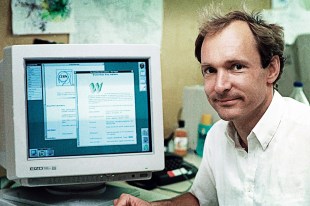Today the death was announced of the prolific Greek Composer Mikis Theodorakis, at the age of 96. The Greek flag above the Acropolis was flown at half mast, whilst the Parliament observed a minute’s silence and three days of national mourning was declared by the Prime Minister. The Greek President, Katerina Sakellaropoulou, hailed him as a “Pan-Hellenic personality” who was also “a universal artist, an invaluable asset of our musical culture”. He wrote over a thousand major classical works, including Operas, Ballets and symphonies, but it was his film music that put him on the popular world stage.
I had never heard of him untill one night in 1974 when I had a remarkable cinema experience.
There is always something magical about going to a cinema in a foreign land. Never did I feel that more than on a hot and balmy August night in the mid 1970’s when I first saw the film “Zorba the Greek” Now, I am not in the habit of seeing a movie when on holiday but I couldn’t resist the little open air cinema in the Greek town of Heraklion on the Island of Crete.
Little did I realise that night that I had stumbled into a minute bit of cinema and political history in the making. “Zorba the Greek” – released in 1964, was adapted from the book of the same name written by the Greek national literary hero Nikos Kazantzakis. Born in this small seaside hamlet, he now lies beneath a modest monument on a hill high above the town.
“Zorba” is one of those late sixties black and white films that looked ancient the day it was released, complete with dancing dots and scratches on the image and something not quite right about the sound throughout the screening.
But no matter – I was here to see the story of a young English bookish character (played by Alan Bates) arriving in Greece to revive the fortunes of an inherited dormant Lignite mine and his belief in himself. On arriving in the Athens port of Piraeus he meets Zorba, (played by Antony Quinn) a local character who spies an opportunity of work from this strange Englishman. They form a shaky alliance. Throughout a tortuous adventure of getting the Lignite Mine up and running they form a deepening bond as Zorba teaches him about life, love and most importantly, how to Dance!
The screening of this film, on this night, in this cinema would have been unremarkable were it not for the fact that Greece had just emerged from nine years of military rule by a Junta who seized power in a coup in 1967.
They were a nasty lot – as they always are. Devoid of humour or humanity, they tolerated no opposition. One such opponent, the left wing Greek composer Mikis Theodorakis, dared to speak out against the Junta. As always, this pissed them off greatly – so, like an Hellenic Taliban, they passed a law stating that his music could not be played in Greece – ever again. Theodorakis wrote the score for “Zorba the Greek”; consequently the film could not be shown in Greece.
This night, was the first screening of the “Zorba” in nearly a decade.
The atmosphere was electric. I had never heard such noises in an auditorium before. People were shouting, clambering over seats, greeting each other with hugs and kisses. Cold beer and Ouzo was handed forward over two rows of seats, friendly insults were exchanged over ten. I had several bottles thrust into my hands during the evening.
Smoking, miraculously, was still allowed; the blue haze drifted into the branches of the trees that hung motionless above us, festooned with strings of coloured light bulbs. The fragrance of Jasmine was strong in the warm night air. A slow hand-clap began; signifying the audience’s demand that the film begin. There was no time table in this sort of establishment.
The unseen projectionist began his magic.
The lights in the branches dimmed, but instead of the noise dying down, it increased; with whistles and cheers and shouts as the first black and white frames with the titles, flickered on the screen.
Then, like an unexpected drop in the wind, there was a few moments of silence suddenly replaced by the first chords of Bouzouki music that echoed on the open air walls.
Well! – The entire cinema audience erupted in a cacophony of screams and whoops and applause for the music they had been denied all those years.
I doubt I heard more than a dozen words of the film that night. When there was just dialogue, the audience talked and gossiped but when there was a single musical note, the audience’s enthusiasm knew no limits. Old women dressed entirely in black sat with cheeses, olives and breads in their skirt laps, ferociously eating, toothlessly laughing at the film; men stood in the space between the seats and screen, arms on each others’ shoulders, dancing in the traditional Greek style mimicking the actors in the film. Young girls and boys, under the cover of the festive excitement, stood in little groups by the trees, secretly seducing each other. All manner of winged insects populated the beam between projector and screen.
But it was the music that everyone had come for. As Zorba and the Englishman danced away their woes on the beach after the disastrous end to their venture, so too did the good people of Heraklion, in that little open air cinema, dance away the last vestiges of a Junta’s ridiculous ban of a composer’s music.
Before anyone could believe it; the film was over.
As the lights came up, half the audience was already out the door carrying their party atmosphere out into the sleepy town.. Some stood around talking enthusiastically. I found myself part of a group who insisted I joined them for food and drink. I eventually crawled out of a taverna as dawn inched up over Kazantzakis’s tomb wondering two things: where was my hotel and why couldn’t every night at the cinema be like this?

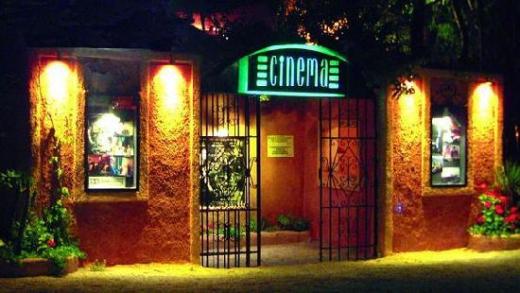
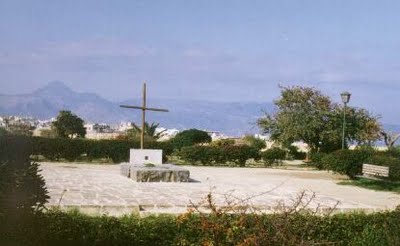

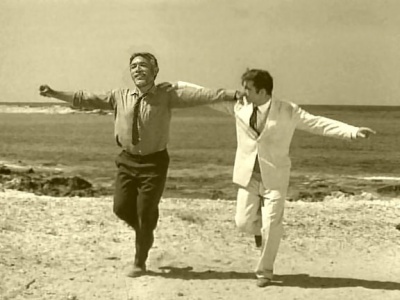

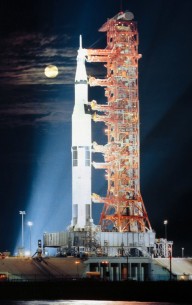 When NASA lit up the five massive Merlin Engines of the 300 foot high Saturn V Rocket, the most powerful machine ever built, they burned through 20 tons of fuel in just 120 seconds producing 7.5 million lbs of thrust as it lifted the Apollo missions on the start of their journey to the Moon. Although it looks like the Saturn V is pushing against the immovable Earth, it was also actually nudging our planet by about 1cm over 1000 years from its orbit. There were 13 Saturn V launches from Pad 39 at Cape Canaveral sending the Apollo missions to the Moon and Skylab into orbit – so a millennium hence, Earth will be 13 centimetres away from where it should be.
When NASA lit up the five massive Merlin Engines of the 300 foot high Saturn V Rocket, the most powerful machine ever built, they burned through 20 tons of fuel in just 120 seconds producing 7.5 million lbs of thrust as it lifted the Apollo missions on the start of their journey to the Moon. Although it looks like the Saturn V is pushing against the immovable Earth, it was also actually nudging our planet by about 1cm over 1000 years from its orbit. There were 13 Saturn V launches from Pad 39 at Cape Canaveral sending the Apollo missions to the Moon and Skylab into orbit – so a millennium hence, Earth will be 13 centimetres away from where it should be.

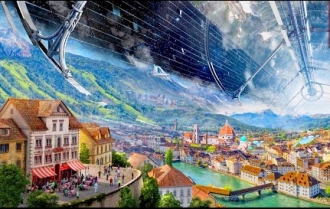
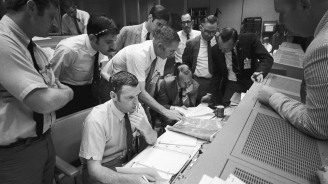

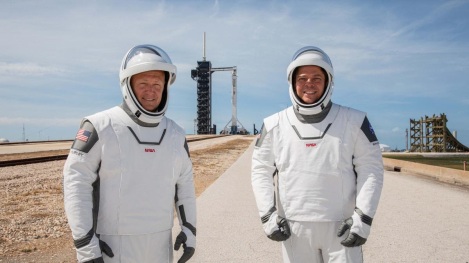
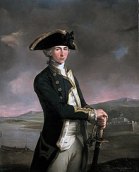 Nelson enlisted in the British Navy as a 14-year-old deck hand. As he was being rowed down river to Portsmouth Naval base, he had sight of the first war ship he’d ever seen. It was HMS Victory, moored up and moth balled. Little did he suspect that within just over a decade, it would be under his command.
Nelson enlisted in the British Navy as a 14-year-old deck hand. As he was being rowed down river to Portsmouth Naval base, he had sight of the first war ship he’d ever seen. It was HMS Victory, moored up and moth balled. Little did he suspect that within just over a decade, it would be under his command.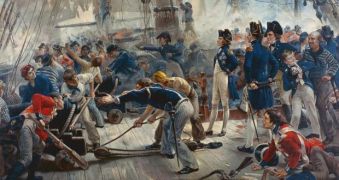 spread over 4 decks, Nelson unleashed a broadside canon attack with one and a quarter tons of lead balls, which travelling at 70mph, smashed through the 4 inch thick wooden walls of the French ships; releasing a thousand shards of deadly splintered wood into the heart of the enemy crew. After the captain, the ships’ surgeon was the most important person on these vessels.
spread over 4 decks, Nelson unleashed a broadside canon attack with one and a quarter tons of lead balls, which travelling at 70mph, smashed through the 4 inch thick wooden walls of the French ships; releasing a thousand shards of deadly splintered wood into the heart of the enemy crew. After the captain, the ships’ surgeon was the most important person on these vessels. Nelson was given a state funeral and celebrated with the largest monument in British History at London’s Trafalgar Square. Not only did he thwart Napoleon’s Naval ambitions, he also set Britain on a century and a half of Naval supremacy – enabling the unstoppable expansion of the British Empire.
Nelson was given a state funeral and celebrated with the largest monument in British History at London’s Trafalgar Square. Not only did he thwart Napoleon’s Naval ambitions, he also set Britain on a century and a half of Naval supremacy – enabling the unstoppable expansion of the British Empire.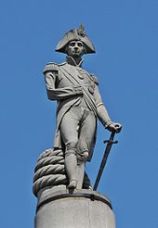 as a Christian civilising force and regarded Slavery as an economic necessity ; Cotton and Sugar being an integral part of the Empire’s wealth, relying on Slavery for the production of these commodities. The Abolitionists, in his view, posed a threat to the stability of the Empire that he would die to defend – which he eventually did.
as a Christian civilising force and regarded Slavery as an economic necessity ; Cotton and Sugar being an integral part of the Empire’s wealth, relying on Slavery for the production of these commodities. The Abolitionists, in his view, posed a threat to the stability of the Empire that he would die to defend – which he eventually did. students – white or of colour, see when they pass under his statue at Oxford. There have been unsuccessful sporadic protests demanding his removal. In an ideal world Rhode’s statue would barely elicit a glance, but it symbolises the continued and ignored inequalities people of colour suffer at Oxford.
students – white or of colour, see when they pass under his statue at Oxford. There have been unsuccessful sporadic protests demanding his removal. In an ideal world Rhode’s statue would barely elicit a glance, but it symbolises the continued and ignored inequalities people of colour suffer at Oxford.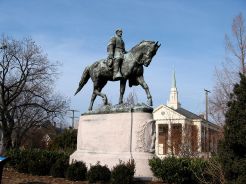 Statues, on both sides. Much like Nelson, Lincoln was honoured with the largest memorial in the Country. Every southern town square was adorned with statues of Robert E Lee or Stonewall Jackson.
Statues, on both sides. Much like Nelson, Lincoln was honoured with the largest memorial in the Country. Every southern town square was adorned with statues of Robert E Lee or Stonewall Jackson. Forty years later, these largely forgotten edifices became significant in the time of “Black Lives Matter” Yet again White supremacists would hold rallies beneath them that were met by Civil Rights and black groups protesting the killing of black men by Police forces across America. At one rally a woman was killed and others injured after a supremacist drove through the opposing crowd. President Trump refused to condemn the murder remarking that “There was bad on both sides”
Forty years later, these largely forgotten edifices became significant in the time of “Black Lives Matter” Yet again White supremacists would hold rallies beneath them that were met by Civil Rights and black groups protesting the killing of black men by Police forces across America. At one rally a woman was killed and others injured after a supremacist drove through the opposing crowd. President Trump refused to condemn the murder remarking that “There was bad on both sides”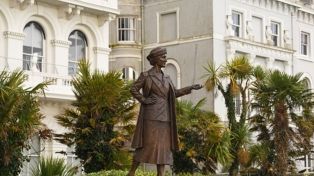 with the Jews that they bring so much scorn upon themselves”. Sharing the view that there was a “Jewish Problem” in Europe.. One Labour MP referred to her as the “Honourable Member for Berlin”. By 1945 her parliamentary career was over.
with the Jews that they bring so much scorn upon themselves”. Sharing the view that there was a “Jewish Problem” in Europe.. One Labour MP referred to her as the “Honourable Member for Berlin”. By 1945 her parliamentary career was over.
 request a page to be either deleted or memorialised; where people can continue to visit and leave memories and comments about the person no longer with us. A kind of digital condolence book. Undoubtedly accompanied by tasteful graphics.
request a page to be either deleted or memorialised; where people can continue to visit and leave memories and comments about the person no longer with us. A kind of digital condolence book. Undoubtedly accompanied by tasteful graphics.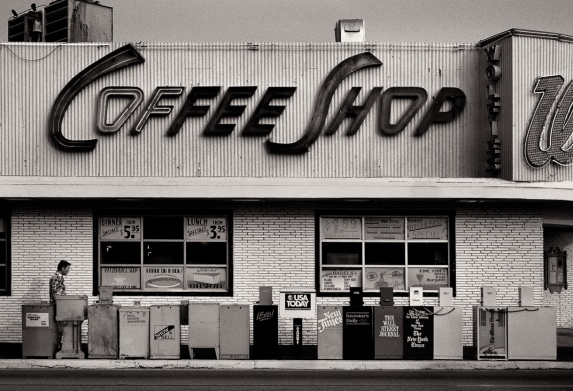
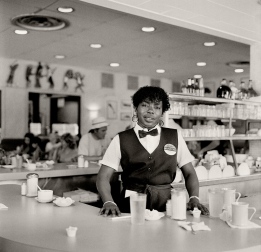
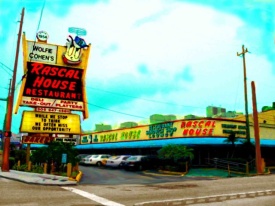

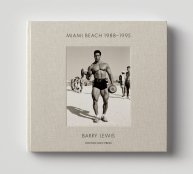

 world, 540 luxury rooms and 6 stories high. Palm Beach Resort was born and soon expanded into a town and then a city.
world, 540 luxury rooms and 6 stories high. Palm Beach Resort was born and soon expanded into a town and then a city.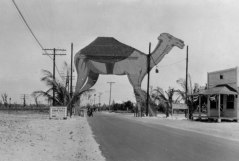
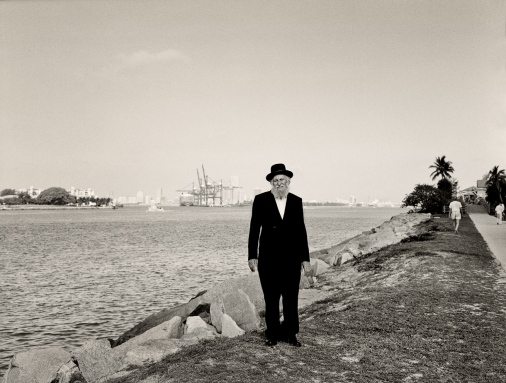
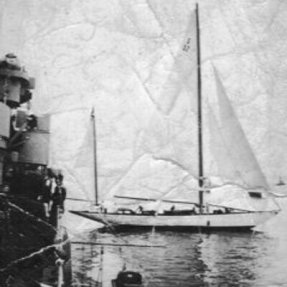
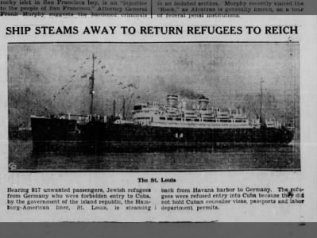 admission to the United States. The Government refused, and the ship had to return to Europe, where more than half its passengers eventually fell victim to the Holocaust.
admission to the United States. The Government refused, and the ship had to return to Europe, where more than half its passengers eventually fell victim to the Holocaust.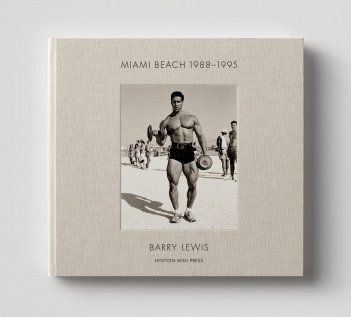

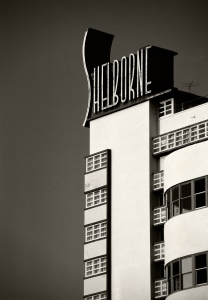 misfits who managed to co-exist on this narrow strip of land – which only three generations before was crocodile infested Mangrove swamps – had simply vanished. Many Snowbirds died, others were pushed out by landlords and developers, who were waking up and smelling the coffee; and the aroma was good and was going to make them a lot of money.
misfits who managed to co-exist on this narrow strip of land – which only three generations before was crocodile infested Mangrove swamps – had simply vanished. Many Snowbirds died, others were pushed out by landlords and developers, who were waking up and smelling the coffee; and the aroma was good and was going to make them a lot of money.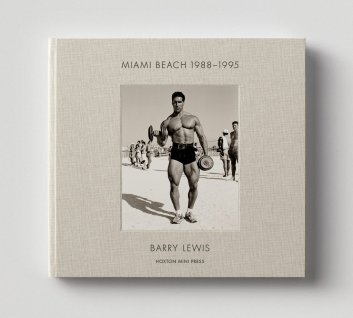
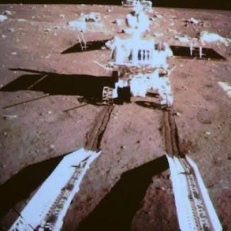

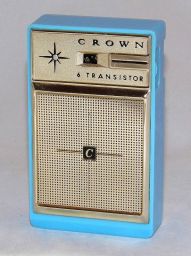 switches made of tiny slivers of germanium crystal and silica – not much bigger than a match head, replaced up to a kilogram of glass valves and copper coils in older radios. Today, in our 15-watt mobile phones there are over a billion of these transistors.
switches made of tiny slivers of germanium crystal and silica – not much bigger than a match head, replaced up to a kilogram of glass valves and copper coils in older radios. Today, in our 15-watt mobile phones there are over a billion of these transistors. A huge amount of money and man hours were invested in fixing the problem – which they did. But there are many who remain unconvinced. “see!…I told you…nothing happened. It was hoax!” This example is now used to stifle any warnings of dangers ahead.
A huge amount of money and man hours were invested in fixing the problem – which they did. But there are many who remain unconvinced. “see!…I told you…nothing happened. It was hoax!” This example is now used to stifle any warnings of dangers ahead.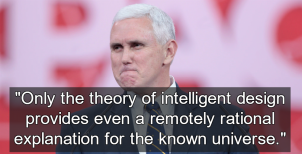 demanding that Intelligent Design be taught as part of the science curriculum along side Darwin’s theories. Abstinence should replace sex education leaving the young open to crippling STIs. The pseudo-science battle of Eugenics has long since been won – it ended with the Nazis.
demanding that Intelligent Design be taught as part of the science curriculum along side Darwin’s theories. Abstinence should replace sex education leaving the young open to crippling STIs. The pseudo-science battle of Eugenics has long since been won – it ended with the Nazis.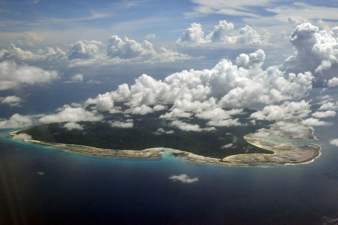 he went to great lengths to circumvent the rules; hiring local fishermen to drop him on the shore. He paid with his life
he went to great lengths to circumvent the rules; hiring local fishermen to drop him on the shore. He paid with his life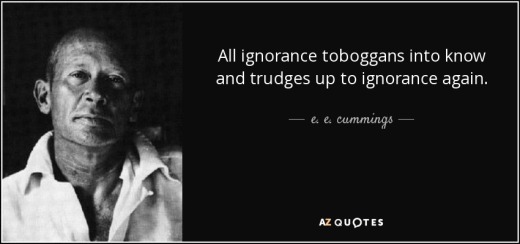

 preceded by the war poem with these words: ”They were staunch to the end against odds uncounted, They fell with their faces to the foe. They shall grow not old, as we that are left grow old: Age shall not weary them, nor the years condemn. At the going down of the sun and in the morning. We will remember them”
preceded by the war poem with these words: ”They were staunch to the end against odds uncounted, They fell with their faces to the foe. They shall grow not old, as we that are left grow old: Age shall not weary them, nor the years condemn. At the going down of the sun and in the morning. We will remember them”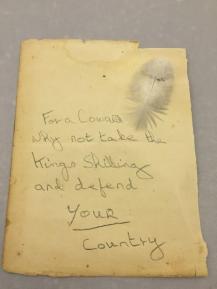 Emeline Pankhurst, but it soon got out of hand. Some soldiers returning from the front would divest themselves of their uniform because they were rotten with lice. One soldier on leave remarked to the woman who handed him a white feather that he would take it back to the boys in the trenches of Passchendaele.
Emeline Pankhurst, but it soon got out of hand. Some soldiers returning from the front would divest themselves of their uniform because they were rotten with lice. One soldier on leave remarked to the woman who handed him a white feather that he would take it back to the boys in the trenches of Passchendaele. from a window down into the moat of the castle. The installation was called “Blood Swept Lands and Seas of Red” a quote from a poem found on the body of an unknown British soldier.
from a window down into the moat of the castle. The installation was called “Blood Swept Lands and Seas of Red” a quote from a poem found on the body of an unknown British soldier.
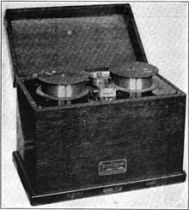 After 40 years the wire recorder was replaced by the far more efficient Tape recorder. These machines enabled the music industry to flourish and revolutionised broadcasting. Like all these inventions, they found their way into the domestic market. But they were cumbersome and large and didn’t really revolutionise people’s lives. Then in the `1960s, with the recent birth of the transistor – small and portability was what the population wanted. Transistor radios were everywhere. From the bathroom to the beach, people took their music stations with them. Tape recorders soon followed.
After 40 years the wire recorder was replaced by the far more efficient Tape recorder. These machines enabled the music industry to flourish and revolutionised broadcasting. Like all these inventions, they found their way into the domestic market. But they were cumbersome and large and didn’t really revolutionise people’s lives. Then in the `1960s, with the recent birth of the transistor – small and portability was what the population wanted. Transistor radios were everywhere. From the bathroom to the beach, people took their music stations with them. Tape recorders soon followed. cartridge verses the Compact Cassette or Cassette Tape. There were some other designs but they did not progress beyond proto-types. Various large corporations wanted to get a standard box tape agreed on, so that manufacture of the tape recorders/ players could begin, whilst at the same time wanting to be the company that gets to license their generic design, 8 track or Compact Cassette. The original designer of the Compact Cassette was Dutch Company Phillips. One day they made an astonishing decision – they gave to the world freedom to use their design, without paying any fees or royalties. Suddenly, the log-jam cleared and within what seemed months; cassette
cartridge verses the Compact Cassette or Cassette Tape. There were some other designs but they did not progress beyond proto-types. Various large corporations wanted to get a standard box tape agreed on, so that manufacture of the tape recorders/ players could begin, whilst at the same time wanting to be the company that gets to license their generic design, 8 track or Compact Cassette. The original designer of the Compact Cassette was Dutch Company Phillips. One day they made an astonishing decision – they gave to the world freedom to use their design, without paying any fees or royalties. Suddenly, the log-jam cleared and within what seemed months; cassette
